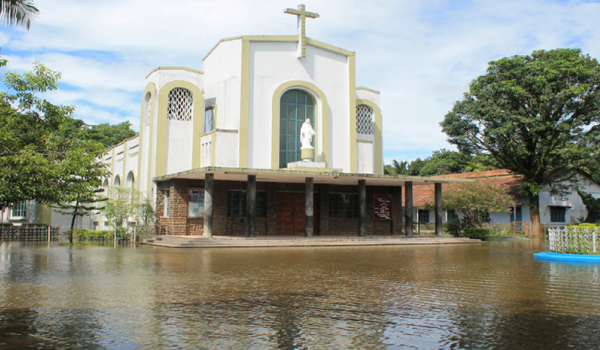
In a land area of 16, 192 square kilometers, the diocesan territory covers civil districts of Tinsukia, Dibrugarh, Sivasagar, Jorhat and Golaghat in the state of Assam. Dibrugarh is the biggest town in the diocese. Tinsukia and Jorhat are other important towns.
Total population is 5,329,982 in the diocesan territory. Assamese, Deori, Kachari Mishing Tai Phake, Boro are the major ethnic communities in the diocese.
Assamese, English, Hindi, Sadri, Bengali, Uraon, Mundari, Kharia, Boro, Kachari, Mishing, Nepali are the languages used in the diocesan area.
The first Catholic priests to come to Assam were Jesuit Fathers Cacella and Cabral. They were on their way to Tibet in 1626. After 1826, when Assam became part of the British empire, the growth of tea plantations brought in Catholic immigrants from Bihar and Bengal. In 1850, Assam was united to Lhasa and Father Krick of the Paris Foreign Mission Society (MEP) was the first Catholic father to set foot in Dibrugarh on Sept. 7, 1851. Fathers Krick and Bourry were killed in February 1854 in Arunachal Pradesh on their way to Tibet. In 1860, Father Mercier is said to have visited Dibrugarh.
In 1870, Assam became part of the prefecture apostolic of Krishnagar. Father Jacob Broy was the first resident priest of Assam with headquarters at Guwahati and he looked after Dibrugarh. In 1889, the prefecture apostolic of Assam was created with headquarters in Shillong and Father Rudolf Fontaine, a Germany Salvatorian, started work in Dibrugarh in 1908. With the outbreak of the First World War in 1914, the German Salvatorians were forced to return to their country and the Jesuits of Calcutta looked after Assam. In 1921, the prefecture of Assam was entrusted to the Salesians of Don Bosco. It was Father Leo Piasecki, SDB, who restarted Dibrugarh church work at the request of Msgr. Louis Mathias, SDB, on Feb. 8, 1931. From 1934 to 1951 Dibrugarh formed part of the diocese of Shillong.
Diocese of Dibrugarh was carved out from the diocese of Shillong on July 12, 1951, with Bishop Orestes Marengo, SDB, as its first ordinary. In 1964, Bishop Marengo, was transferred to the newly erected diocese of Tezpur. On July 6, 1964, Father Hubert D' Rosario, SDB, was appointed second bishop of Dibrugarh. On his transfer to Shillong in 1969 Father Robert Kerketta, SDB, succeeded him on May 31, 1970, as the third pastor of Dibrugarh. When Bishop Father Kerketta was transferred to Tezpur in December 1980, Father Joseph Variathukala, SDB, was elected as the vicar capitular. On July 13, 1981, Pope John Paul II appointed Father Thomas Menamparampil, SDB, as the fourth pastor of Dibrugarh. In 1992, when the Holy See erected the diocese of Guwahati with Bishop Thomas Menamparampil, SDB, as its bishop, once again Dibrugarh became vacant and Father Sebastian Karotemprel was elected as the diocesan administrator. Bishop Joseph Aind, SDB, the first priest of Dibrugarh, was appointed the fifth bishop of Dibrugarh on Dec. 23, 1994.
Until 1964, diocese of Dibrugarh comprised Lakhimpur, Tinsukia, Dibrugarh, Sivasagar, Jorhat and Golaghat districts of Assam and Tirap, Changlang, Lohit and Dibang Valley of Arunachal Pradesh as well as the two states of Nagaland and Manipur. In 1964, when the diocese of Tezpur was erected, Lakhimpur became part of that diocese. In 1973, the diocese of Kohima-Imphal was erected with the states of Nagaland and Manipur. With all the eastern districts of Arunachal Pradesh, the diocese of Miao was erected on Dec. 7, 2005.
Towns are managed by corporation. The villages and small towns are administered by elected local bodies called panchayats and municipalities.
The diocesan area is well connected in terms of transport infrastructure by roads and railway. The nearest airport is in Mohanbari, 14 kilometers from Dibrugarh town.
Approximately Rs 11,118 ($238.20) is the per capita income in the diocese territory. Farming especially Paddy cultivation is the biggest occupation. Tea and spices are also cultivated in this area. It is called the tea city of the Northeast India.
Government and private operators provide extensive telecommunication facilities in the diocesan area. The diocese is well connected by local cable TV networks.
Nearly 70.02 percent is the literacy rate in the diocesan territory.